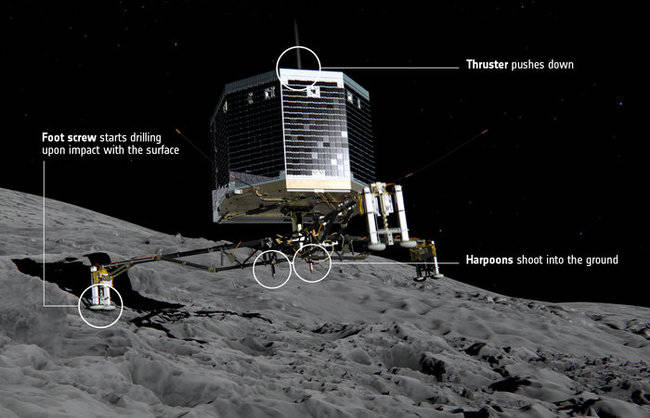13 Facts About The Comet Landing That'll Make You Appreciate How Important That Was
by N/A, 11 years ago |
2 min read
|
650
The comet landing is one of the most impressive feats of space exploration of all time.
1. The Rosetta mission is one of the most complicated and demanding missions ever.

The Rosetta mission required meticulous planning. Scientists planned a ten year mission through space with an end goal of landing a probe on a comet that's only 2.5 miles in diameter.
2. The mission is named after The Rosetta Stone, the slab discovered in Egypt in 1799.

The Rosetta stone helped us gain a huge understand of human history, including language. Scientists hope this mission will do the same.
3. Rosetta traveled more than 3 billion miles to get to the comet.

4. This is the Philae Lander.

It's the probe that's been sent to land on the comet. The probe is named after an island in the river Nile.
5. Philae is a completely modern probe.

It's been sending back photos for social media.
6. Rosetta is the first spacecraft to explore beyond the main asteroid belt using only solar power.

7. The discoveries made on the comet could provide invaluable information about the origins of our galaxy.

8. Including why our planet is the only one we've discovered that contains water.

9. The mission was almost ruined because of a broken thruster.

Thrusters were installed on the probe to keep it from bouncing off the comet on touchdown. One of the thrusters failed, but Philae was able to successfully sink it's harpoons into the comet.
10. There was only a 75% chance that it would be a successful mission.

Once Philae detached from Rosetta, it only had about a mile of space to land on.
11. Now that there has been a successful landing, Philae will perform numerous experiments on the comet.

Philae is equipped with many different instruments that will allow it to perform experiments to test density, thermal and ice properties, texture, surface strength and more.
12. Comets are some of the most constant things in our universe.

While planets undergo changes from year to year, comets remain relatively unchanged in space.
13. The comet being explored is called Churyumov-Gerasimenko.

It's named after the scientists who discovered it, Klim Churyumov and Svetlana Gerasimenko.
✕
Do not show me this again
